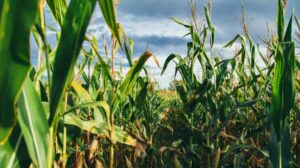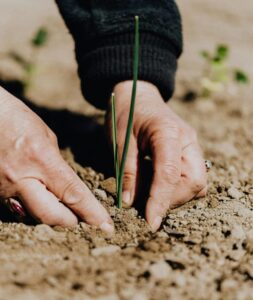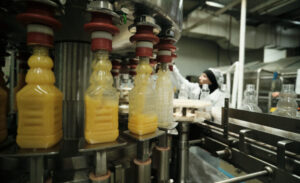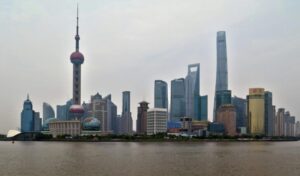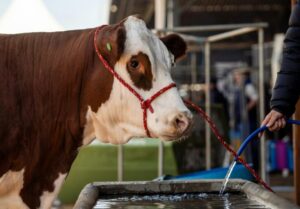Introduction
- In the past two decades, the links between bio-cultural diversity and the richness of plant species in South Africa have contributed to ongoing attempts to develop traditional medicines for use in the modern complementary and alternative medicines sector. Eventually this will aid in the discovery of new drug entities for pharmaceutical industries.
- African traditional medicines are divided into two streams. The first involves the informal trading of herbal remedies and medicinal plants sold by traditional healers or sangomas and bushdoctors. But there is also a more formal market in which medicinal plants like buchu and African potato extract are sold as over-the-counter drugs.
- It is estimated that 80% of the globe’s population relies on traditional medicines. In South Africa, studies show there is one traditional healer for every 700 to 1200 patients [however, find Essop, R. 2015 and Wilkinson, K. 2013 under “Websites & publications” on these statistics]. The primary health care system is inaccessible to many and this drives people’s reliance on medical plants.
- Geo-climatic regions produce plants that are popular as traditional medicines. In the Western Cape, where fynbos (fine bush) dominates, leaf material is used by traditional healers from the KhoiSan culture. Elsewhere, in the Eastern Cape, KwaZulu-Natal and Gauteng, barks, roots and bulbs are all harvested from the wild for medicinal use. KwaZulu-Natal is also home to one of the largest medicinal markets in Africa.
- Many of the medicinal plants are harvested in the wild, some becoming very rare and facing extinction.
- The trade in traditional medicines was estimated at around R2.9 billion annually (Mander, Ntuli, Diederichs & Mavundla, 2007).
- Because cultivating medicinal plants ensures their availability, protects the ones in the wild and creates job opportunities, the intervention of cultivation technologies is supported by government and other role players.
Source: “How changes in African traditional medicine research can benefit South Africa” which can be found at http://theconversation.com/how-changes-in-african-traditional-medicine-research-can-benefit-south-africa-46486
The first African Herbal Pharmacopoeia, completed with collaborators from all over Africa and Europe, can be found at www.aamps.org.
International business environment
- Find “Traditional and complementary medicine” under the “ Programmes” and “Essential medicines and health products” on the World Health Organisation(WHO) website, www.who.int/traditional-complementary-integrative-medicine/en/.
- Schindler C., E., Drinkwater E. et al. 2022.Wildcheck: Assessing the risks and opportunities of trade in wild plant ingredients. Rome: FAO. Available at www.fao.org/documents/card/en/c/cb9267en
- Visit www.aamps.org, website of the Association of African Medicinal Plants Standards (AAMPS). This non-profit company has representatives from several African and European countries.
Farming medicinal plants
Increases in market prices for certain medicinal plants have been linked to localised species extinctions and declining supplies of these plants. The declining supplies are directly attributed to over-harvesting of certain popular target species for medicinal use. This has resulted in researchers calling for the cultivation of indigenous medicinal plants as an intervention to address biodiversity and market sustainability issues. There is, however, much debate around the pro’s and con’s of medicinal plant cultivation. Concerns are largely focused on: (i) The potential loss of cultural and indigenous values associated with wild harvesting of medicinal plants; (ii) Potentially reduced production of secondary metabolites (the active ingredients in most medicinal plants) in farmed plants compared to wild stocks; and (iii) Genetic contamination of local species populations through cultivation with plants from alternative genetic stocks.
Cultivation trials and pilot projects conducted to date have shown that medicinal plant cultivation has good economic potential for supplying commercial-scale volumes of medicinal plants. Fast-growing species can be supplied in sufficient quantities to meet market demand within a few years. However, slow-growing trees, particularly forest trees, are unlikely to supply the quantities of medicinal bark demanded in the short-term; nor does the production of bark from these trees present an economically viable production system. The production of alternative tree-based products (such as tree leaves) has thus been investigated.
However, little is known about the effects of farming (cultivation) on the medicinal properties of plants. Cultivation aims to increase plant yields by improving growing conditions through addition of agro-chemicals and controlling the growing climate. Many Traditional Healers believe that cultivated plants treated with agro-chemicals (including fertilisers, pesticides and insecticides) do not have the same medicinal strength as wild plants. The active medicinal compounds that make medicinal plants so useful are mostly ‘secondary metabolites’ that are produced by the plant to protect it from attack by pathogens, insects and browsers or grazers. These secondary metabolites may also play a role in protecting the plant from extreme climatic conditions (e.g. frost). Plants that are stressed by these attacks or extreme climatic conditions tend to produce greater concentrations of secondary metabolites as a survival mechanism. Plants cultivated using agro-chemicals under controlled climatic conditions experience minimal stress and consequently produce less secondary metabolites. Chemical testing of cultivated plants has shown that the beliefs of many Traditional Healers with regards to cultivated plants having less medicinal strength than wild plants may, in fact, be true for many species. This has created the challenge of finding cultivation techniques that increase plant growth rates, but do not decrease the medicinal properties of the plants.
In a survey undertaken in South Africa in which farmed stocks of raw and stabilised (freeze-dried) rare / scarce medicinal plants were introduced into a medicinal market through traders and Traditional Healers, there was a general acceptance of the farmed plant materials by most Traditional Healers and their clients. Where the strength of medicinal compounds had been reduced through the farming techniques or processing technologies used to stabilise the products, the Traditional Healers simply prescribed higher dosages of the plants and plant products. This acceptance of farmed plant material is most likely attributable to the growing scarcity and associated cost of certain popular medicinal plants.
There is simply no other way to meet market demand for certain remedies that use scarce plants than to accept the farmed plant material in these cases. For species where availability or scarcity is less of an issue, Traditional Healers would probably be less accepting of farmed plant material. However, for commercial-scale production and supply of medicinal plants and products, farming is a necessity to sustainably achieve the volumes of plant material required.
Therefore, it is likely that medicinal plant farms are the reality for the future provision of both scarce and commercially sought-after medicinal plant species in southern Africa.
Source: Myles Mander, Nicci Diederichs & Warren Spring
Dr Sonja Venter from the ARC-VOP (see “Role players” heading) has addressed audiences before on the opportunities that exist with medicinal plants for farmers.
National strategy and government contacts
- The Indigenous Knowledge Act, 2019 (No. 6 of 2019)
- Intellectual Property Laws Amendment Act (IPLAA), 2013 (no. 28 of 2013)
- The National Development Plan (NDP) included in its strategy collaborating with traditional healers (page 321).
- Access to South Africa’s biodiversity is legally controlled by the Biodiversity Act (No. 10 of 2004). The Government Gazette No. 8831 of 8 February 2008 also applies, carrying the Commencement of Bio-Prospecting, Access and Benefit-Sharing Regulations, 2008.
- In line with the National Health Act, government has also developed Regulations governing the implementation of the Traditional Health Practitioners Act, 2007 (Act No 22 of 2007). Additional regulations have been published subsequently to give effect to the act.
- The trade in indigenous medicinal plants is unregulated and so side-effects are not known or catalogued. After calls to monitor this, the Medicines and Related Substances Act was amended in 2009. It now stipulates that phytopharmaceuticals must undergo tests to prove their safety.
The Department of Science, Technology and Innovation (DSTI) established the National Indigenous Knowledge Systems Office (NIKSO) as one of its Programmes. The aim of NIKSO is to protect and promote African indigenous knowledge systems (IKS). NIKSO is also viewed as the growth engine for IKS knowledge development and knowledge management. Investment in the harvesting of IK through documentation from oral sources, systematisation and development holds the potential of contributing to the scientific and technological solutions for the future challenges of poverty and diseases in South Africa. IKS will also preserve and affirm local communities by incorporating these communities into the knowledge economy. Visit www.dsti.gov.za.
The Department of Forestry, Fisheries and the Environment (DFFE) is the South African government authority responsible for the environment. Visit www.dffe.gov.za. Bio-Products Advancement Network South Africa (BioPanza) is a DFFE initiative “to optimise development and enhance growth in the South African biotrade and bioprospecting sector”. Issues like sustainable bark harvesting are in the province of Forestry.
The Department of Health‘s support for African traditional medicines research has included a R6 million grant channelled through the Medical Research Council for research into the safety, efficacy and quality of traditional medicines used as immune boosters by people living with HIV and AIDS. The department has a legislative framework to encourage the development of natural products for human health through the Medicines and Related Substances Act (Act 101of 1965). The Act seeks to regulate the use of complementary, alternative, African Traditional and other categories of medicines in South Africa to ensure quality, safety and efficacy. See www.health.gov.za.
Department of Agriculture (i) Directorate: Plant Production (ii) Directorate: Plant Health. Find information and contact details at www.nda.gov.za. The Directorate Plant Health is responsible for export regulations and standards as well as a special protocol for export to the USA.
Inspection for export is done by the Perishable Product Export Control Board (PPECB), appointed by the Department of Agriculture. See www.ppecb.com
Find the cartoon “Medicinal plants under threat” commissioned by the Public Understanding of Biotechnology (PUB) on medicinal plants at www.pub.ac.za/cartoons/.
Further reference:
- Reporter. 2025, April 22. “New leadership appointed to Interim Traditional Health Practitioners Council”. SA News. Available at www.sanews.gov.za/south-africa/new-leadership-appointed-interim-traditional-health-practitioners-council
- Baravalle U. 2024, August 12. “Safeguarding Africa’s Heritage: WIPO’s New Treaty Roots Out Biopiracy to Cultivate Traditional Knowledge Protection”. KISCH IP. Available at www.kisch-ip.com/2024/08/safeguarding-africas-heritage-wipos-new-treaty-roots-out-biopiracy-to-cultivate-traditional-knowledge-protection/
- Moloi P. 2022, October 27. “Traditional medicine emerges at the front of SA’s new, sustainable businesses”. Eye Witness News. Available at https://ewn.co.za/2022/10/27/traditional-medicine-emerges-at-the-front-of-sa-s-new-sustainable-businesses
- Apostolidis A. 2022, May 5. “Bioprospecting in South Africa”. Go Legal. Available at www.golegal.co.za/bioprospecting-regulations-legislation/
- Totten D. 2022, April 21. “A big win for natural medicine in South Africa”. Bizcommunity. Available at www.bizcommunity.com/Article/196/878/227199.html
Role players
View the Premium Listings below (scroll down or click on “Premium Listings” on the Table of Contents to the right).
Further reference:
- The Agricultural Research Council (ARC) conducts research on various agricultural aspects of medicinal plants, especially those plants that are scarce and endangered or has commercial potential. The research involves the investigation of propagation, cultivation, bio-activity, plant pest and diseases, community development, nursery establishment, sustainable production and quality control.
- Thekwini Municipality In terms of market size, Durban is one of the largest regional markets for medicinal plants in South Africa. About 400 or more of the 700 medicinal plant species traded in South Africa can be found at Durban’s medicinal plant markets.
- eThekwini’s Silverglen Muthi Nursery, which contains over 200 medicinal plant species, partners with the community to revitalise stocks of threatened plants. A primary focus is to share knowledge with medicinal plant harvesters, traders, and Inyangas and advise them that they can produce their own stocks of medicinal plants through growing their own seedlings and farming. At the Visitor’s Centre educational films, lectures and displays are presented.
- The Medical Research Council (MRC) previously established the IKS Lead (Health) Programme to promote, develop and protect IK (indigenous knowledge), and IKS and its innovative systems of health through education, research and development.
- The University of Johannesburg hosts the South African Research Chairs Initiative (SARChI) in Indigenous Plant Use.
- The National Research Foundation (NRF) manages the Indigenous Knowledge Systems Programme which includes the use of indigenous medicinal plants. Find the Indigenous Knowledge Systems (IKS) Knowledge Fields Development Framework Document on the website. Included in the scope of research funding is IKS and Bioeconomy (which covers African traditional medicine).
- The provincial nature agencies and departments of environmental affairs. Find details on the “Biodiversity and ecosystems services” page.
Websites and publications
Visit websites listed earlier on this page.
- Kejafa Knowledge Works has stocked books on medicinal plants, including Medicinal Plants of South Africa (Ben-Erik Van Wyk, Bosch Van Oudtshoorn, Nigel Gericke) and Medicinal Plants of the World (Michael Wink, Ben-Erik Van Wyk). Visit www.kejafa.com.
- Several publications are available from the Association for African Medicinal Plants Standards. These include the African Herbal Pharmacopoeia; Plants, People & Nature: Benefit Sharing in Practice; and Green Gold: Success Stories Using Southern African Plant Species. Visit www.aamps.org for more.
- Journal of Ethnopharmacology – www.sciencedirect.com/journal/journal-of-ethnopharmacology
- Find the document Medicinal Plants of South Africa, “a guide to the most commonly utilised medicinal plants in South Africa”, among the brochures and production guidelines at www.nda.gov.za, website of the Department of Agriculture. Several other relevant documents exist here too e.g. Devil’s claw, Hoodia (Asclepiadaceae), Kooigoed, Kougoed, Pelargonium sidoides, Production guidelines: Fever tree, Production guideline Wild Ginger, Wild Ginger, Sour plum, Aloe Ferox, Buchu and Wild Rosemary. It is not indigenous, but there are also guidelines for the production of the medicinal plant parsnips.
- Find the annual A Profile of the South African Medicinal Plants Market Value Chain on the Directorate Marketing web pages at www.nda.gov.za.
- Titles like Zulu medicinal plants: an inventory (Ann Hutchings), Handbook of African medicinal plants (Maurice M. Iwu), Healing Traditions: African Medicine, Cultural Exchange and Competition in South Africa, 1820 – 1948 (Karen E. Flint) and The Phytomedicines Industry in Southern Africa (Myles Mander) can be sourced at http://books.google.co.za.
- Xaba P & Croeser P. 2012. Traditional useful plants of Africa – their cultivation and use. Cambridge (UK): Cambridge University Press.
- Read about the research project “Validation of efficacy and mechanism of action of medicinal plants used in the Eastern Cape” at www.researchgate.net/project/Validation-of-efficacy-and-mechanism-of-action-of-medicinal-plants-used-in-the-Eastern-Cape
- Market Research on the organic and natural products and fynbos industry – with an emphasis on how to facilitate entry is compiled by Marianna Smith and can be obtained from of the Surplus People Project. Crops like Buchu, Devil’s Claw and Ghaap are included in the discussion. Visit https://spp.org.za.
- Find the numerous papers on the Human Sciences Research Council website www.hsrc.ac.za.
- Convention on Biological Diversity – www.cbd.int. Included here are the Bonn Guidelines on Access to Genetic Resources and Fair and Equitable Sharing of the Benefits Arising out of their Utilisation.
- www.fairwild.org – FairWild Foundation’s Standard for the trading of medicinal plants.
- Included on www.scidev.net are issues relating to traditional medicines. This is the website of Science and Development Network which features “news, views and information about science, technology and the developing world”.
- Maltitz, P. von. 2011. Your Medicinal Garden. Available at www.zanemvula.co.za/medplants.html
- Moffett, R. 2010. Sesotho Plant and Animal Names and Plants Used by the Basotho. Bloemfontein: Sun Press.
- Van Wyk B.-E., de Wet H. & Van Heerden FR. 2008. An ethnobotanical survey of medicinal plants in the southeastern Karoo, South Africa. Science Direct. Available at www.sciencedirect.com/science/article/pii/S0254629908002329
- Diederichs, N. (Ed). 2006. Commercialising Medicinal Plants: A Southern African Guide. Stellenbosch: SUN PRESS.
- Hanson, B.A. 2005. Understanding Medicinal Plants. New York: Routledge.
- Mander, M. 1998. Marketing of Indigenous Medicinal Plants in South Africa: A case study in Kwazulu-Natal. Rome: Food And Agriculture Organization of the United Nations. Available at www.fao.org/docrep/019/w9195e/w9195e.pdf
Some articles
- Read our blogs “Traditional farming knowledge should be stored for future use: the technology to do this is available“, “Africa is a treasure trove of medicinal plants: here are seven that are popular” and “South Africa’s traditional medicines should be used in modern health care“
- Matlanato D. 2024, May. “Indigenous medicine earns entrepreneurs a solid income”. Environment Quarterly (DFFE). Available at www.dffe.gov.za/sites/default/files/publications/environmentquartely_may.pdf
- AFP. 2023, August 17. “WHO holds first traditional medicine summit”. Eye Witness News. Available at https://ewn.co.za/2023/08/17/who-holds-first-traditional-medicine-summit
- Simon N. 2022, September 14. “The African plant that captured Armani’s attention”. Food for Mzansi. Available at www.foodformzansi.co.za/the-african-resurrection-plant-that-captured-armanis-attention/
- Aremu A.O. & Makunga N. 2022, July 13. “Africa is a treasure trove of medicinal plants: here are seven that are popular”. The Conversation. Available at https://theconversation.com/africa-is-a-treasure-trove-of-medicinal-plants-here-are-seven-that-are-popular-184189
- Ntseku M. 2022, July 1. “Illegal tree bark stripping and plant harvesting remain a challenge at Table Mountain National Park”. Cape Argus. Available at www.iol.co.za/capeargus/news/illegal-tree-bark-stripping-and-plant-harvesting-remain-a-challenge-at-table-mountain-national-park-8141b651-a333-4adb-92a1-1e958ddeb374
- Engel K. 2022, June 22. “Researchers conduct first rooting of critically endangered tree known for its medicinal properties”. Cape Argus. Available at www.iol.co.za/capeargus/news/researchers-conduct-first-rooting-of-critically-endangered-tree-known-for-its-medicinal-properties-9c4d2b80-ec53-4639-8c9d-be2bca4d6b3a
- Qukula Q. 2021, August 19. “Plant poachers target SA’s endangered succulents as international demand grows”. CapeTalk. Available at www.capetalk.co.za/articles/424966/plant-poachers-target-sa-s-endangered-succulents-as-international-demand-grows
- Omotayo A. Aremu A., Ndhlovu P. & Otang-Mbeng.W. 2021, July 15. “South Africa is rich in plants used for skincare: rural women helped us document some”. The Conversation. Available at https://theconversation.com/south-africa-is-rich-in-plants-used-for-skincare-rural-women-helped-us-document-some-163911
- Dwarka D. 2020, November 23. “South African researchers are looking at medicinal plants for possible COVID-19 treatments”. The Conversation. Available at https://theconversation.com/south-african-researchers-are-looking-at-medicinal-plants-for-possible-covid-19-treatments-147056
- Matiso S. 2020, September 22. “‘No foreign country can take plants without a permit,’ says expert”. 702. Available at www.702.co.za/articles/396874/no-foreign-country-can-take-plants-without-a-permit-says-expert
- Friedman B. 2020, September 20. “Traditional medicine ‘not just scientific-based, but also spiritually informed’”. CapeTalk. Available at www.capetalk.co.za/articles/396667/traditional-medicine-not-just-scientific-based-but-also-spiritually-informed
- Staff Writer. 2020, July 8. “South Africa to look at African medicines in fight against coronavirus: minister”. BusinessTech. Available at https://businesstech.co.za/news/government/414585/south-africa-to-look-at-african-medicines-in-fight-against-coronavirus-minister/
- Bhengu L. 2020, May 31. “Traditional healers warn WHO: ‘Hands off traditional medicine!’”. Times Live. Available at www.timeslive.co.za/news/south-africa/2020-05-31-traditional-healers-warn-who-hands-off-traditional-medicine/
- eNCA. 2020, May 7. “Coronavirus: Embracing alternative medicine”. Available at www.youtube.com/watch?v=PhgvOK791d8
- Beinart R. 2020, February 9. “The story of the pharma giant and the African yam”. Available at https://theconversation.com/the-story-of-the-pharma-giant-and-the-african-yam-129011
- Kriel G. 2020, January 8. “Time for SA farmers to cash in on the succulent boom”. Farmer’s Weekly. Available at www.farmersweekly.co.za/agri-business/agribusinesses/time-for-sa-farmers-to-cash-in-on-the-succulent-boom/
- Felem A.F. 2019, May 7. “Concerns raised over stripping of Cape Town’s indigenous trees”. Eye Witness News. Available from https://ewn.co.za/2019/05/07/concerns-raised-over-stripping-of-ct-s-indigenous-trees
- Find the articles by Nontobeko Mncwangi and Alvaro Viljoen in the South African Pharmaceutical Journal at www.sapj.co.za. Two of these can be read online: about Cancer bush and Aloe ferox.
- Find relevant articles in the Journal of Ethnopharmacology at https://www.journals.elsevier.com/journal-of-ethnopharmacology . These include ones like the following: Ngarivhume T., van’t Klooster C., de Jong J. & van der Westhuizen J. 2015. “Medicinal plants used by traditional healers for the treatment of malaria in the Chipinge district in Zimbabwe”. Journal of Ethnopharmacology, 159, 224-237.
- Find the Brand South Africa article on the indigenous knowledge systems degree offered at the North-West University at www.brandsouthafrica.com.
- Essop R. 2015. “Government can’t specify how many sangomas are practising in SA”. Eye Witness News. Available at http://ewn.co.za/2015/07/10/Govt-cant-specify-how-many-sangomas-are-practising-in-SA.
- Sobiecki J. 2014. “The intersection of culture and science in South African traditional medicine”. Indo-Pacific Journal of Phenomenology, 14(1). Available at www.scielo.org.za/scielo.php?script=sci_arttext&pid=S1445-73772014000100006
- Find “From witchcraft to proven cure” at www.farmersweekly.co.za in which Dr Sue Taylor and Roelof Bezuidenhout discuss whether South Africa’s indigenous medicinal plants could be the farming crops of the future.
- Mahomoodally M.F. 2013. “Traditional Medicines in Africa: An Appraisal of Ten Potent African Medicinal Plants”. Evidence-Based Complementary and Alternative Medicine. Available at https://www.hindawi.com/journals/ecam/2013/617459/
- Anton. 2013, August 27. “5 Top Performing African Medicinal Herbs”. Arabella. Available at www.arabella.co.za/2013/08/27/5-top-performing-african-medicinal-herbs/
- Wilkinson K. 2013. “ Use of traditional healers vastly exaggerated”. Bhelisisa. Available at http://bhekisisa.org/article/2013-08-01-usage-of-traditional-healers-vastly-exaggerated
- Van Wyk B. 2011 “The potential of South African plants in the development of new medicinal products”. South African Journal of Botany 77(4), 812-829. www.sciencedirect.com/science/article/pii/S0254629911001190
- Mander M., Ntuli L., Diederichs N. and Mavundla K. 2007. “Economics of the Traditional Medicine Trade in South Africa.” National Health Review. Available at www.researchgate.net/publication/284755794_Economics_of_the_traditional_medicine_trade_in_South_Africa
A number of brochures, grower guidelines and Info paks (booklets) on flora with medicinal properties indigenous to Africa can be found on the website of the Department of Agriculture, Forestry and Fisheries, www.dalrrd.gov.za (under “Resource centre”). These include:
- Devil’s claw
- Hoodia (Asclepiadaceae)
- Kooigoed
- Kougoed
- Medicinal plants of SA
- Pelargonium sidoides
- Production guidelines: Fever tree
- Production guideline Wild Ginger
- Sour plum
- Wild ginger
- Wild Rosemary
Guidelines exist too for plants which are not indigenous, like the Parsnips Production guidelines.

